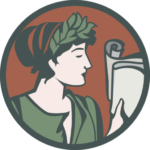In October, a woman in 1859 mourning attire will be getting off the trains in Newburgh, Albany, and Buffalo, New York, for a series of in-person and livestreamed events about the Orphan Trains and the mothers left behind. The event is coordinated in partnership libraries, bookstores, and historical societies throughout New York State.
Author Julia Park Tracey is on a 14-day-long Retracing the Orphan Train Tour. Her novel, The Bereaved, has been lauded as the “the holy grail” by the National Orphan Train Museum for uncovering the other side of the story—the mothers who lost their children to the Orphan Train. In the novel, based on Park Tracey’s actual ancestral history, Martha loses four children to the Orphan Trains. Martha is Julia Park Tracey’s great, great, great grandmother and her lost son is Tracey’s great, great grandfather.
How Park Tracey came to uncover her grandfather’s history as a young rider on the Orphan Train, research it, and then write the novel about it is the subject of her talks. In each location, she retraces her family history. For instance, in Newburgh, the novel begins on a Newburgh farm, before her main character’s husband dies and leaves her and her children vulnerable to an appointed protector.
Park Tracey’s depiction of the never-ending amount of women’s work that needed to be performed daily is well researched, showing the increased demands on her after the death of her husband. Women rocked the cradle with one foot, while darning socks, keeping an eye on the kettle and disciplining the children. With her husband’s death, Martha had to prepare the body, sew mourning outfits for herself and her children, prepare food and her house for the visitors who would come for the funeral, all under the cloud of uncertainty for her and her children’s future.
The vulnerability of women in the 1850s is a major theme of The Bereaved. As a new widow, Martha lived through the times in which women had no rights to property, had no dominion over their own children, and faced regular threats and assaults to their bodies. These were times without support services and if there was no family to help, families were plunged into poverty and dire circumstances.
Martha’s move with her children to New York City became a crisis when she could not find work that would sustain the family in their tenement housing. Soon her children were hungry, joining the five percent of the population, the children who roamed the streets of the City. To keep her children fed, housed, and get them educated, Martha did what many single women had done before her, she parked the children at The Home for the Friendless until she could raise the funds to support them. However, the Home for the Friendless had other objectives; one was to help move the street children out of the City and the other was to separate the children from the “wonton” single mothers who were not considered of good moral character by virtue of being single.
The Orphan Trains ran for 75 years, with nearly 250,000 children removed from New York City and shipped out throughout New York and further West, where they were either put up for adoption or worked as indentured servants until they came of age. There are nearly three million people alive today who are descended from these riders according to the Orphan Train Museum.
To follow the Retracing the Orphan Train Tour or attend any of the events, please visit www.sibyllinepress.com for a complete list of events, both in-person and livestreamed. Event stops include Albany and Buffalo, with the final destination, the Orphan Train Museum in Concordia, Kansas.
Media Contact: Vicki DeArmon, Sibylline Press, (area code: seven zero seven) 776-7284, vicki@sibyllinepress.com

